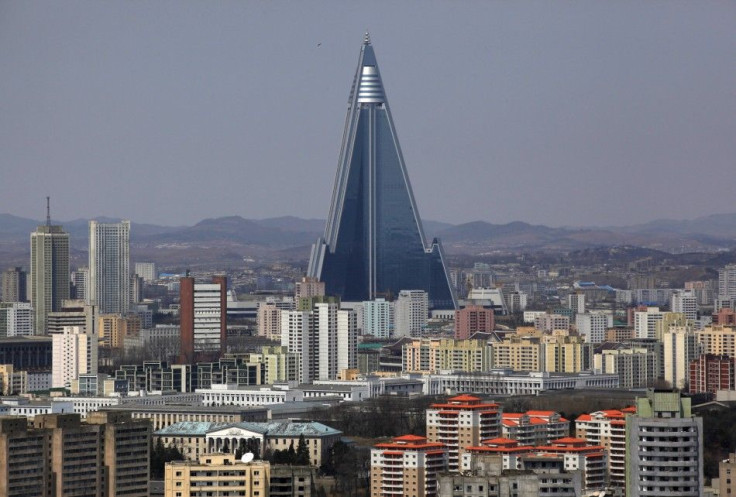North Korea’s Massive ‘Hotel Of Doom’ Will ‘Probably’ Open In 2013

The most talked about hotel opening of 2013 will not be a palatial palace in Dubai or a four-star skyscraper in New York; it will be a 105-story “pyramid monster” in Pyongyang, North Korea.
The massive Ryugyong Hotel has dominated the skyline of the North Korean capital for 26 years, but the chief executive of international hotel operator Kempinski group, which will manage the so-called “Hotel of Doom,” said it will open to the public for the first time next year.
Opening the hotel is widely seen as a way for the totalitarian regime, burdened by international sanctions, to generate foreign revenue through tourism. China, North Korea’s largest trade partner, is also its biggest source of tourism, while most Western countries advise nationals against travel.
Perhaps due to a lack of demand and access, Kempinski will open just 150 rooms on the top floors.
Speaking at a conference in Seoul on Thursday, Kempinski CEO Reto Wittwer noted that the luxury hotel operator would be the first Western hospitality company to operate in North Korea when the hotel “probably, partially” opens next year.
Wittwer believed the company had secured an early-mover position in an untapped emerging market, and he hoped to bolster the hotel rooms with shops, restaurants, a ballroom and offices on the lower levels over the coming years.
“This pyramid monster hotel will monopolize all the business in the city,” Wittwer reportedly told those in Seoul Thursday. “I said to myself, we have to get this hotel if there is ever a chance, because this will become a money-printing machine if North Korea opens up.”
The German company’s plans for the hotel are hardly what North Korea had in mind back in the 1980s. Original designs for what is now the world’s 47th tallest building, at 1,100 feet (330m), included three revolving restaurants and 3,000 rooms.
The massive hotel has long been a symbol of North Korea’s economic problems. Scheduled for completion in 1989 for the 13th World Festival of Youth and Students, it was abandoned by 1992 amid economic mismanagement and insufficient funds.
A delegation from the E.U. Chamber of Commerce in Korea inspected the building 15 years ago and found that it was beyond repair, saying its elevator shafts appeared to be crooked.
Orascom Telecom, an Egyptian company that operates a mobile phone network in the hermetic nation, began equipping the building in 2008 and reportedly spent upwards of $180 million on finishing the hotel’s façade. It will fund the soon-to-open hotel while Kempinski manages it.
Aside from sporadic international visits over the past three decades, little is known about what will greet the hotel’s first paying guests next year
Voted “Worst Building in the History of Mankind” by Esquire magazine in 2008, the publication called it “hideously ugly, even by communist standards.”
A Beijing-based tour company that was granted a rare glimpse at the building earlier this year released photos of an expansive glass lobby with tiers of bare concrete. They likened the inside of the “Hotel of Doom” to a car park.
For a hotel brand like Kempinski with a “growing collection of distinguished properties around the world” and the motto “life should be lived with style,” the Ryugyong Hotel is certainly a fixer-upper.
© Copyright IBTimes 2025. All rights reserved.






















